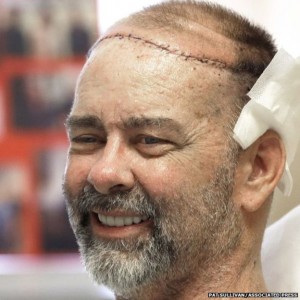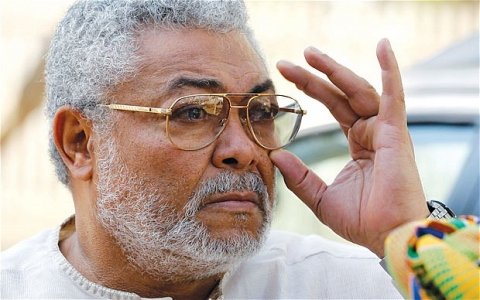 The first skull and scalp transplant has been performed in a 15-hour operation, say doctors in the US.
The first skull and scalp transplant has been performed in a 15-hour operation, say doctors in the US.
James Boysen, who is 55 and from Texas, was missing the whole of the crown of his head after treatment for a rare type of cancer.
He was also given a new kidney and pancreas during the procedure.
The software developer said he was “amazed” at how he feels after the surgery at Houston Methodist Hospital and the Anderson Cancer Center.
Cancer
Mr Boysen was diagnosed with leiomyosarcoma in 2006.
The cancer of the muscle on the scalp was treated with a combination of chemotherapy and radiotherapy, but it permanently damaged the surrounding tissue.
The scalp and skull were destroyed by the treatment, leaving his brain vulnerable.
Normally doctors would use a combination of skin grafts and metal plates or 3D-printing to reconstruct his skull.
But he was already on immune suppressing drugs after earlier kidney and pancreas transplants which were now failing.
His struggling organs, and the medicine, were stopping doctors performing the reconstruction and the hole in the skull prevented an organ transplant.
Dr Jesse Selber, who led the team at Anderson, said the hole was 10 by 10 inches (25 cm by 25 cm) covering “the entire top half of the head”.
He added: “When I first met Jim, I made the connection between him needing a new kidney and pancreas and the ongoing anti-rejection medication to support them, and receiving a full scalp and skull transplant at the same time that would be protected by those same medications.
“This was a truly unique clinical situation that created the opportunity to perform this complex transplant.”
James Boysen received a skull and scalp transplant
‘Long journey’
The surgeons had the idea to combine the operations four years ago, but had to wait for a donor.
Mr Boysen joked he had “way more hair than when I was 21”.
He added: “This has been a long journey, and I am so grateful to all the doctors who performed my transplants.
“I’m amazed at how great I feel and am forever grateful that I have another chance to get back to doing the things I love and be with the people I love.”
Dr Michael Klebu, from Houston Methodist Hospital, said: “This was a very complex surgery because we had to transplant the tissues utilising microsurgery.
“Imagine connecting blood vessels 1/16 of an inch under a microscope with tiny stitches about half the diameter of a human hair being done with tools that one would use to make a fine Swiss watch.”





